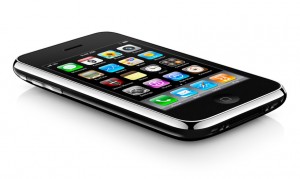How did the world function before cell phones? When wireless technology didn’t exist, people were tied down to a place and a time. Before constant access spoiled the world with instant gratification, communication required patience and effort. Prior to the consumer appeal of mobile applications for entertainment, function and general amusement, businesses struggled to find a more personal way to create client relationships. Then came the app.

Consider these numbers: 7 billion. This is the population of the world right now. And 4 billion. The number of people who owned a cell phone last year. Next is 680 million, which is the number of smartphones in the world in 2009. That’s 17 percent of all cell phones. Finally, the number that is most crucial to your company is 1 billion. This is the number of people who will own a smartphone in the next three years.
According to these predictions from market analysts at Futuresource, a research-based consulting company specializing in consumer electronics and media, people will continue to flock to the all-in-one convenience and capabilities of smartphones and their attractive apps. Estimates show that consumers won’t just trickle into the trend, but the demand will come in a downpour by the billions.
This is great news for businesses looking to tap into the opportunities of a whole new medium of marketing; one that brings advertising methods up-to-date with modern consumers and into the mobile age. Some have come to refer to the phenomenon as “app-vertising.” Advertising Age reported 1 billion applications served as of mid-2009, claiming that most users download between 20 and 40 apps on their smart phones. Not only do the rosy numbers predicting mobile growth put Apple and Blackberry CEOs in a good mood, but this technological trend with staying power means big things for companies that know how to use it.
The numbers alone would suggest that in-app advertising is in marketers’ favor. With 680 million smartphones floating through the market, surely taking advantage of this in-pocket branding tool is a good idea. “iPhone has created a kind of irrational hysteria among brand marketers,” commented Patrick Moorhead, director of Razorfish digital advertising, about the hyped potential of this recently tapped mecca of marketing. But marketers have learned the hard way in the digital arena, as through every other medium in advertising history, that it’s not as simple as putting the message out there. It’s all in the delivery. Chitika, a search-targeted advertising company, found that consumers clicked through a whopping .03 percent of overall advertisements viewed on their iPhones. Not the kind of results in which marketers are willing to invest. Chitika’s study, however, monitored non-mobile advertisements viewed on mobile devices; the wrong ads through the wrong medium.
Mobile app marketing is not about putting a company’s current advertising on consumers’ phones, but instead using a new, more personalized and interactive strategy. As marketing trends progress toward building closer, stronger relationships with consumers, companies are creating unique and functional apps. The idea is to encourage customer interaction and practical use while cultivating real conversations with people rather than advertising at them. By bringing a company’s offerings straight to consumers’ phones, products and services become readily available at all times. It’s about increasing contact by creating another touch point in people’s lives. An obsessively used, constantly checked and increasingly personalized touch point.
While creativity is a given to keep consumer attention in the mobile market, the practical and functional capabilities prove a major selling point in apps with lasting value and retention rates. In a study of the apps marketplace, Flurry Inc, a tracking company that focuses on mobile media, found that news and reference apps are used most often, at a rate of at least once a day. That’s more than can be said for the more gimmicky apps, which tend to lose their novelty after the first few uses.
In regards to the more functional business apps out there, consumers can, for example, skim through and order from a restaurant’s mobile menu, search home listings from a realtor’s database, or play an interactive game reinforcing the brand’s image, all right from their phones. Remember the days when cutting-edge digital advertising consisted of companies mass text messaging their latest coupon? The days of simple and blatant self-promotion marketing just got a lot more interesting.











